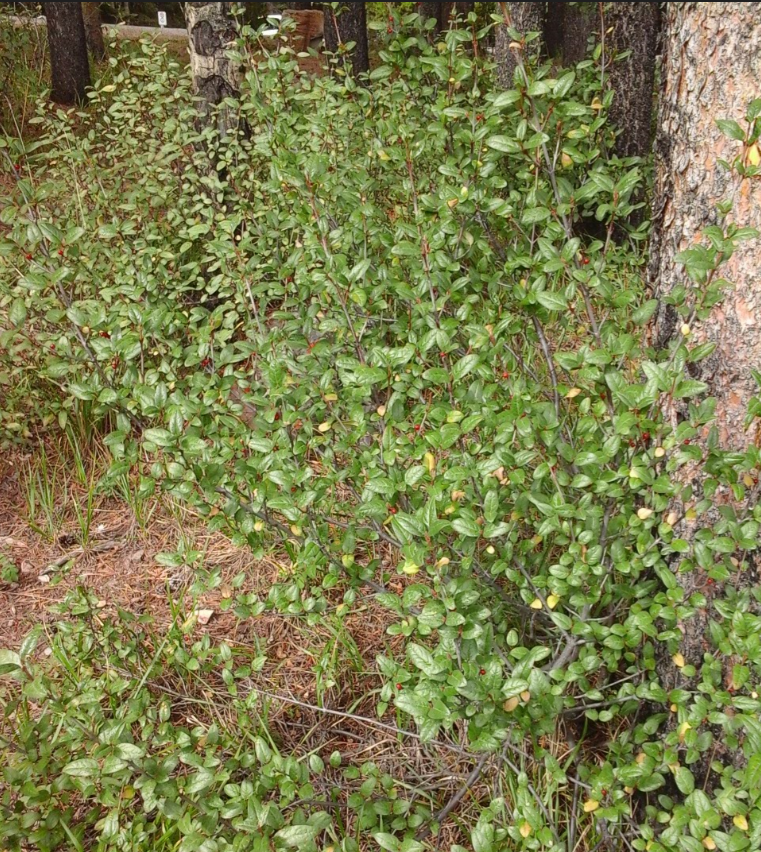Berries: sxusa, plant: sxwesemellp

These are very special and valuable berries for the Secwepemc and other Interior Salish peoples. They were, and still are, gathered in large quantities, usually around the month of June. Mary Thomas and Ida William noted that they are good thirst quenchers. They help to suppress thirst and freshen the mouth; just a few berries were held in the mouth and the juice sucked. More commonly, the berries are crushed and whipped into a stiff creamy froth, called “Indian ice-cream,” and eaten as a special treat, especially at gatherings and parties.
Formerly, special whippers were made from shredded inner bark of maple or silverberry, tied to a stick. The berries are also mixed with water and sugar to make a lemonade-like beverage that is still popular in many households as a summer-time drink, especially around haying time. Mary Thomas would mix a solution of pineappleweed (Matricaria matricarioides) together with soapberry juice for a summer drink. Teit (1909:618) noted: “Stalks and leaves [of soapberry] boiled slowly for twenty-four hours. The person fasted all day, and drank four cupfuls of the decoction at night. Acted as a physic next morning. Decoction of roots and stems drank in sweat-houses for purification.” Palmer (1975: 62) reported, “About half a cup [of the canned berry juice] makes a tonic, which is good for the stomach.” Mary Thomas recalled that people made general use tonics with sticks of soapberry (sxusem), juniper (punllp), choke cherry (tkwlose7) and Oregon grape (sts’el’sellp). Palmer (1975: 61) reported that soapberries were found in quantity near Salmon Arm. Dawson (1891:43) recorded the name for the head of Salmon Arm as ‘Shi-whots-i-matl’ [sxwseméllp – lit. “soapberry plants”]. Mary Thomas also noted that Salmon Arm was known for, and named after, its soapberries, and that people could come by canoe and boat to pick them. [[occurrence in area: Mary Thomas, pers. comm.]
![]()
